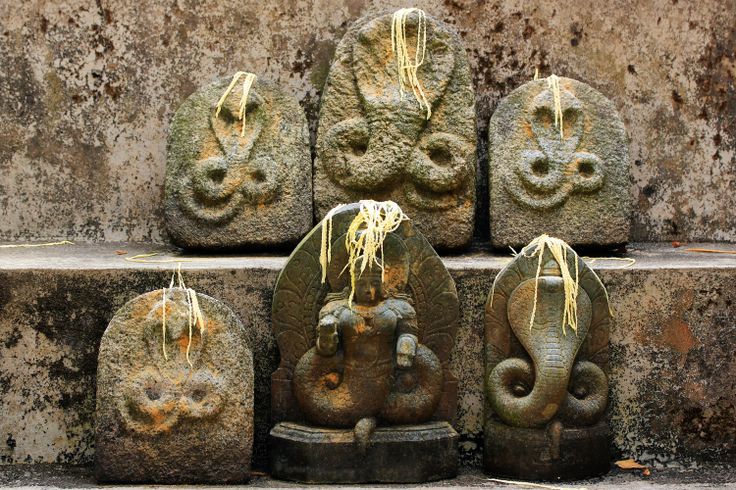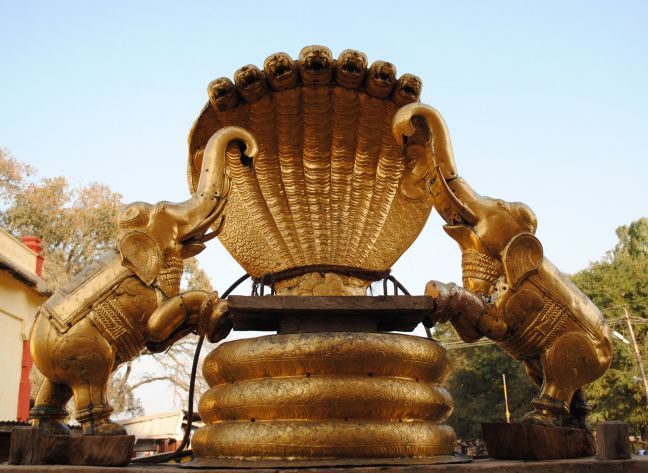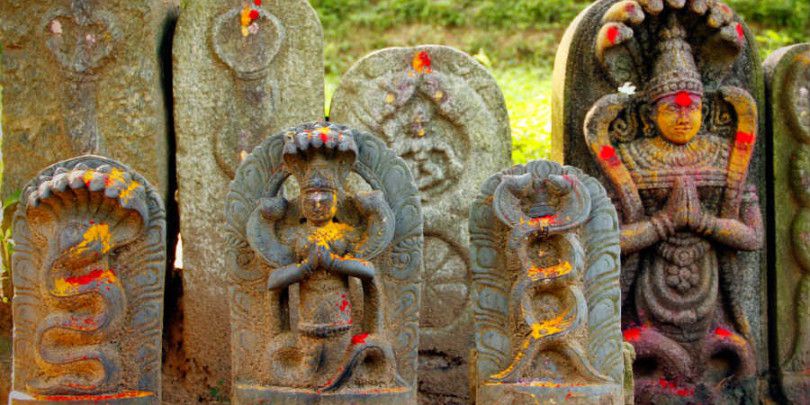No products in the cart.
Human beings soon after stabilizing from nomadic venture started the ritual of worshipping the nature and everything that was helpful to them in one or another way. It helped them construct a system that was derived from the beliefs in social organizations, local cults and deities. Humans thus started exploring nature and started sorting a culture to abide by. Things like sun, river, mountain and snake have been thought of as important element of simultaneous existence since then. Snake worship has also been a part of the culture of India ever since then. Nag Panchami is one of the most important festivals in India celebrated to commemorate the existence of the snake god.
Celebrated on the fifth day of the moonlit-fortnight in the month of Sawan according to the Hindu calendar, this festival falls in the month of July /August according to the Gregorian calendar. It is celebrated in various parts of the country amongst the community where it has been prevalent for long. The grandest celebrations can be seen in the southern India and in the states of Bengal and Maharashtra. The festival has religious significance too. It is believed that Snakes have been the savior of human race from the wrath of demons and also, that the earth is balanced on the head of on Shesh Nag. There are also several legends and stories associated with the festival, one of the most important one is given below.
Nag Panchami 2022
![]()
Nag Panchami on Tuesday, August 02, 2022
Nag Panchami Puja Muhurat – 06:05 AM to 08:38 AM
Duration – 02 Hours 32 Mins
Nag Pancham date in Gujarat – Tuesday, August 16, 2022
Panchami Tithi Begins – 05:13 AM on Aug 02, 2022
Panchami Tithi Ends – 05:41 AM on Aug 03, 2022
Origin of Nag Panchami
The exact origins of the Nag Panchami festival is uncertain. It is not known when the worship of snakes and the snake-god precisely began. The mere sight of the slithering reptile gives many of us a creepy feeling and hence, the worship of snakes in India appears strange to many people, especially those not familiar with Hindu customs. But then, snakes have been associated with many Hindu Gods. Lord Vishnu rests on Sheshnag (Snake with Six hoods). The world according to Hindu mythology and cosmogony, rests on the head of Sheshnag, and when he shakes his head we have earthquakes.
The custom of snake-worship is believed to have come from the “Naga” clan, a highly developed tribe who lived in ancient India. The Indus Valley civilization of 3000 B.C. gives ample proof of the popularity of snake-worship amongst the Nagas, whose culture was fairly wide-spread in India even before the Aryans came. Later, the Indo-Aryans began to worship many of the snake deities of the Nagas and some of them even found mention in the Hindu Puranas.

Many scholars have detected traces of existence of snake-worship contained in the 8th Ashtaka of the Rig Veda, wherein the earth is addressed as the Sarpa-rajni or “the queen of the serpents or the queen of all that moves”. The Yajur-Veda provides a more definite account of serpent-worship; the Samhita of this Veda contains prayers to the Sarpas (snakes) who are addressed as denizens of the heavens, the skies, and the rays of the sun, the waters, the vegetables and the like. In the Brahmanas of the Samhita part of the Yajur-Veda, invocations are addressed to serpents and sweet sacrifices are offered for their acceptance. Manu, the ancient law-giver of the Hindus also makes mention of the Nagas and the Sarpas. Carved or painted figures of snakes can be found on the walls of many Hindu temples that exist from the medieval era. Images of snake worship rituals can also be spotted in the world famous Ajanta caves. Detailed description of the cobra snakes can also be discerned in Arthasastra, the classic ancient Hindu political text by the great Hindu philosopher Chanakya (c.300 BC).
In medieval India figures of snakes were carved or painted on the walls of many Hindu temples. In the caves at Ajanta images of the rituals of snake worship are found. Kautilya, in his “Artha shastra” has given.
The mention of the Nagas and the Sarpas is also found in the Mahabharata. In the sacred Hindu text Bhagavad-Gita, one witnesses how Lord Krishna tells Arjuna that Vaasuki and Ananta represent him amongst the Sarpas and the Nagas respectively.
The Hindu Puranas (Sanskrit encyclopedic texts) also mention the Nagas and the Sarpas. In the Bhagavata Purana, Vaasuki and eleven other Nagas are mentioned as forming the string of the sun’s chariot, one serpent being held to be sacred to each month. The Markandeya Purana embodies the well-known story of the marriage of Madalasa, a Naga princess of superb beauty, with King Kulvalasva.
In the apologue of the gold-giving serpent, the fifth fable of the Pancha Tantra (famous Indian collection of fables and other morally instructive tales), authentic evidence is found of the prevalence of serpent-worship in the post-Vedic ages of Ancient India. As it has been established that the Pancha Tantra was composed sometime between the first and sixth centuries, it is believed that the tradition of snake-worship existed in India prior to the sixth century A.D. The celebrated French traveler Jean Baptiste Tavernier, in the course of his visit to India in the seventeenth century, saw the serpent worshipped in the form of an idol. Though Tavernier has neither mentioned the name of the festival nor given any further details, the description corresponds with the Nag Panchami festival as it is observed throughout India at the present day.
To understand the history of the festival, the time of its observance should also be kept in mind. Nag Panchami is observed in the Hindu month of Shravan (July/August), the advent of the rainy season in many parts of India. It is the time when snakes leave their holes in the flooded fields and jungles and enter the habitations of men – thereby throwing them into great consternation. It is during this period that the greatest number of deaths from snake-bite occur in places like Lower Bengal. The people of the country-side labor under the impression that the only way of obtaining immunity from snakebite is by propitiating the snake-goddess Manasa. It is also the beginning of the harvest season, when crops attain their full growth and the harvest is ready to be reaped. In countries like India the reaping of the harvest is (still largely) a manual operation and farmers have to work in the fields all by themselves, thus exposing themselves to the bites of poisonous snakes lurking unseen among the dense crop. This fear seems to be the main cause for Nagapanchami celebrations. Propitiating the snake god provides some psychological succor to the poor rural folk whose main occupation remains agriculture.
Stories & Legends of Nag Panchami

It is said that long before Aryans arrived in India, a clan named Nagas lived in India. It was a highly developed clan. It is said that the snake-worship amongst the Nagas, was extremely popular and it can be proved according to the evidences derived from the Indus Valley civilization of 3000 B.C. After the Naga culture gradually got incorporated into Hinduism, the Indo-Aryans also gradually accepted many of the snake deities as their God too. The prominent Cobra snakes mentioned in the Puranas that are to be worshipped are Anant, Vaasuki, Shesh, Padma, Kanwal, Karkotaka, Kalia, Aswatar, Takshak, Sankhpal, Dhritarashtra and Pingal. However, some of the historians claim that they were not snakes but Nag Kings of various kingdoms which were worshipped as Gods.
It is also a popular belief amongst people in Hindu religion that thousand-headed Shesh Nag who symbolizes Eternity holds the entire spherical earth on its head. Also, that it is the resting couch of Lord Vishnu, one of three most important gods of Hindu religion. In Jainism and Buddhism snake is regarded as sacred creature with divine qualities. It is because some ancient texts say that a Cobra snake saved the life of Buddha and the Jain Muni Parshwanath.
Stories of snakes association with Hindu gods also enhance the stature of these reptiles in Hindu culture. A popular legend says that the elder brother of Lord Krishna, Balrama was the incarnation of Sheshnag on earth. Snake is also given due importance because it is considered to be the ornament of Lord Shiva around his neck. The celebration of Nag Panchami in the month of Shravan (considered as the month of Lord Shiva in Hindu religion) also explains the deep association of Shiva and commemoration of snake as his companion.
It is believed that even the ancient architecture exhibit the evidence of the importance of snakes in the Indian culture. On the caves of Ajanta, the images of the rituals of snake worship have been found. Even Indian literature is full of stories of the virtue of snake. The famous author Kautilya, in his “Artha shastra” has given detailed description of the cobra snakes. It is said that it was also the wide belief of people in ancient India that if they worship snake, they won’t cause harm to them and their family. So, there is no one specific legend to why the Naga Panchami started in India, it is being for too long due to the religious significance and social importance of this unique reptile.







Nag panchami is also called Garuda Panchami– as Garuda ( the Vahana of Lord Vishnu) or the royal eagle is the natural enemy of the Snakes and serpents. Worshiping Garuda on this day also grants a protective shield against all snake related malefic conditions in ones natal chart.
I have also read that Naga Panchami is celebrated to remember the victory of Lord Krishna over Kaliya, a monstrous black serpent who was killed by Krishna in the Yamuna river. The Kaliya Mardan story is a very popular story.